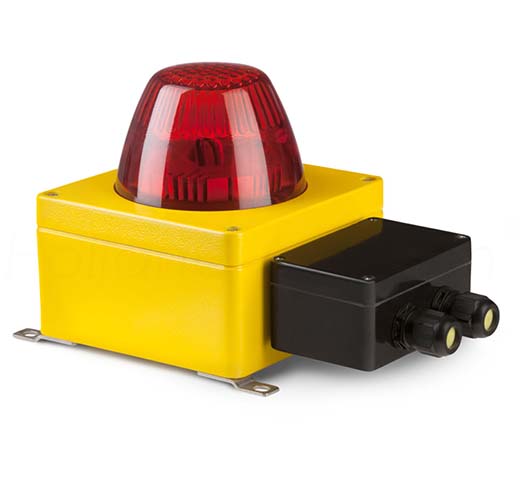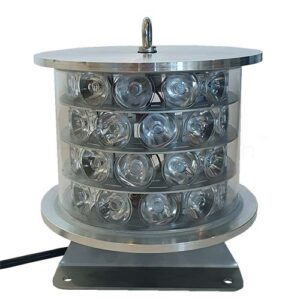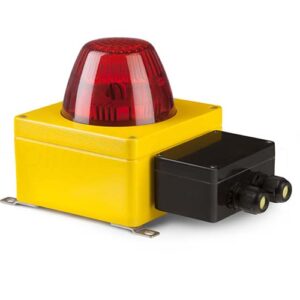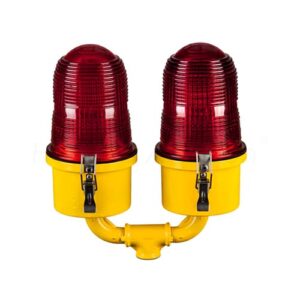Description
Holland Aviation OSH150-200 is a low-intensity obstruction light to denote obstacles.
An obstruction is an object that extends above an obstacle protection surface and must be lighted at night. The marking or lighting of obstacles is crucial to reduce hazards to aircraft by indicating the presence of these obstacles. For more significant structures, such as the lifting legs of drilling rigs, where it is required according to CAP 437, the Holland Aviation OSH150-200 obstacle light is recommended.
Features of the HA OSH150-200 LED Obstruction light
- Weight and Size: 4.2 kg, 160 x 240 x 150 mm
- Technology and Compliance: LED technology, suitable for Atex IECEx zone 2, is applicable for both land-based and offshore environments. The OSH150 model features a 200 Cd obstruction light with a glass Fresnel lens, compliant with CAP437 and CAP 168 standards.
- Power and Durability: Equipped with high-power LEDs, this light has an expected lifetime of over 75,000 hours.
When do you need what obstruction light:
Obstruction lights are crucial for aviation safety, as they enhance the visibility of buildings or other fixed obstacles that could pose a risk to aircraft. These lights are typically installed on towers, fences, and other structures near heliports or airports. There are two main types of obstruction lights:
- Red Lamps: These can either blink or remain constantly illuminated.
- White Lamps: These typically flash 40 times per minute.
The use of these lights varies depending on the time of day and the height of the structure. White flashing lights are used during the daytime, while red lights are used at night. For buildings and structures between 61 and 152.4 meters (200-500 feet) tall, medium-intensity white flashing lights are recommended. If a building exceeds 152.4 meters (500 feet), it should be painted for added visibility, and structures taller than 213.4 meters (700 feet) should use high-intensity white flashing lights, both day and night.




